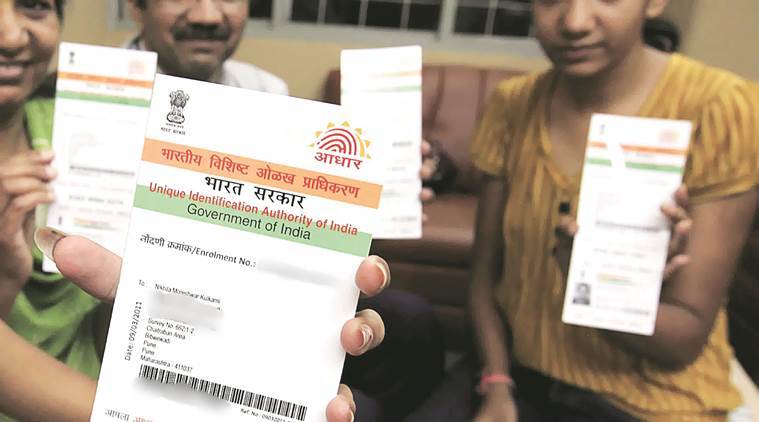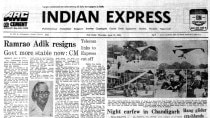- India
- International
To achieve its full potential, Aadhaar should be made easier and safer to use
Aadhaar has touched the life of almost every Indian resident. If there is one learning from the study, it is that the best way to deliver on the promise of Aadhaar is to focus on improving the user experience, making it easier for everyone to use Aadhaar safely every day.
 For a large number of these people, Aadhaar was the first usable ID, in the absence of which they found it difficult to access services. (Representational Image)
For a large number of these people, Aadhaar was the first usable ID, in the absence of which they found it difficult to access services. (Representational Image)
On September 29, 2010, Ranjana Sonawane, a resident of Tembhli in the tribal district of Nandurbar in Maharashtra received the first Aadhaar number. In less than 10 years, 95 per cent of the adult residents in India have gotten theirs. For a large number of these people, Aadhaar was the first usable ID, in the absence of which they found it difficult to access services.
Do they use it? Yes, about once a month. Equally important, they are satisfied with Aadhaar (92 per cent), trust that the data is safe (90 per cent) and feel that it has made PDS rations, MGNREGS and other social programmes more reliable (80 per cent). These are the findings of the latest State of Aadhaar Report (SoAR) — a study that attempts to capture the impact of Aadhaar in the real world by bringing out voice of the user.
Away from the drawing rooms and seminar halls of experts are people who do not always get enough to eat. For them, exclusion isn’t a concept, but a lived reality from which there doesn’t seem any escape. Even their rightful dues often fail to reach them. The report finds that nearly 50 per cent of the people have used Aadhaar to access rations, MGNREGS, social pensions, SIM cards or bank accounts for the first time, and that 81 per cent of Aadhaar holders say that they will provide it if they have a choice of which ID to provide. Sixty one per cent of beneficiaries trust that Aadhaar prevents others from accessing their benefits.
Everyone has compassion for the disadvantaged: The government, political leaders, NGOs, academics, op-ed writers, philanthropists and taxpayers. How do we ensure that we work towards empowering the most vulnerable in a truly objective manner?
This is where carefully designed, large scale studies become important. The State of Aadhaar Report released this year covers 167,000 Indian residents in probably the largest study of its kind. And, it has been prepared under the guidance of balanced technical and advisory panels that include some prominent supporters and critics of Aadhaar.

However, it would be a mistake to read the report for a validation of one’s own viewpoint. Instead, it should be studied for the insights that the data provides. These insights can become the basis for the improvement in systems, not only by UIDAI or the government but by everyone who has a stake in improving the economic and societal benefits that depend upon a robust ID system.
For instance, there are some cases where authentication fails because the biometrics are defaced due to age. During the launch of the report, retired Supreme Court judge, Justice Srikrishna, recounted how he too had trouble in getting authenticated due to the difficulty of scanning his fingerprints. But Justice Srikrishna, in the same breath, also suggested a solution. He pointed out that despite the failure to read his fingerprint, he was not denied entry at passport controls in many countries to which he has travelled. That was possible because someone had the authority to make an exception after proper scrutiny.
The UIDAI has always maintained that there would be individuals for whom biometric authentication does not work. However, failure to authenticate cannot be a reason to deny any services to them and the organisation requesting the authentication must mandatorily provide an exception handling mechanism in such cases. The Supreme Court too has recognised this need in its judgement that upheld Aadhaar’s legality.
For those who want to delve deeper into the data to derive insights for their specific needs, there is a useful companion site (http://stateofaadhaar.in) where they can access an interactive dashboard. Researchers can also download the entire data and their own analysis. We hope that all stakeholders in the government, non-profit and private sectors make full use of this opportunity, tease out every lesson and every new question, and share them publicly and widely.
The report indicates a need for the state to double down on the unfinished agenda of ensuring that Aadhaar works for everyone, that is, marginalised groups are enrolled, the process to update records is made simpler, the grievance redress systems are strengthened, and exclusions due to Aadhaar are eliminated.
Aadhaar has touched the life of almost every Indian resident. If there is one learning from the study, it is that the best way to deliver on the promise of Aadhaar is to focus on improving the user experience, making it easier for everyone to use Aadhaar safely every day.
It is only then that the bold bet which began with Ranjana Sonawane in a remote corner of Nandurbar a decade ago, will achieve its full potential.
This article first appeared in the print edition on December 19, 2019 under the title ‘Aadhaar, 10 years on’. Sharma was the founding Director-General, UIDAI, and now Chairman, TRAI. Pande was involved in the early implementation of Aadhaar and now works for Omidyar Network India, an investment firm focused on social impact that supports the State of Aadhaar initiative.
EXPRESS OPINION
More Explained
Apr 19: Latest News
- 01
- 02
- 03
- 04
- 05









































